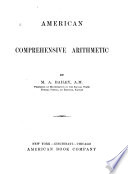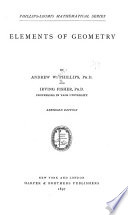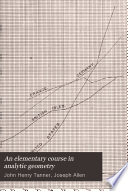 | George Albert Wentworth, George Anthony Hill - Geometry - 1894 - 150 pages
...246. Theorem. Parallelograms having equal bases and equal altitudes are equivalent. 247. Corollary. The area of a parallelogram is equal to the product of its base and its altitude. 248. Theorem. The area of a triangle is equal to half the product of its base... | |
 | Bothwell Graham - Arithmetic - 1895 - 240 pages
...is one-half the diameter. clrcleMEASUREMENT OF PLANES. 16. It is demonstrated in Geometry : I. That the area of a parallelogram is equal to the product of its base and altitude. II. Tliat the area of a triangle is equal to one-half the product of its base by... | |
 | William Frothingham Bradbury - Arithmetic - 1895 - 398 pages
...of a parallelogram is the perpendicular distance from the opposite side to the base ; as К N. 47L The area of a parallelogram is equal to the product of its base and altitude. NOTE. For the Rectangle see Arts. 197-201. 7. What is the area of a parallelogram... | |
 | George Albert Wentworth - Mathematics - 1896 - 68 pages
...their altitudes. 363. The area of a rectangle is equal to the product of its base and altitude. 365. The area of a parallelogram is equal to the product of its base and altitude. 366. Cor. 1. Parallelograms having equal bases and equal altitudes are equivalent.... | |
 | Middlesex Alfred Bailey - Arithmetic - 1897 - 332 pages
...273, and 274. III. The area of a rectangle is equal to the product of its base by its altitude. IV. The area of a parallelogram is equal to the product of its base by its altitude. V. The area of a triangle is equal to one half the product of its base by its altitude. VI.... | |
 | Andrew Wheeler Phillips, Irving Fisher - Geometry - 1897 - 374 pages
...origin of the custom of calling the second power of a number its "square." PROPOSITION V. THEOREM 306. The area of a parallelogram is equal to the product of its base and alt1tude. GIVEN — the parallelogram ABCD, with base b and altitude a. To PROVE the area... | |
 | Andrew Wheeler Phillips, Irving Fisher - Geometry - 1897 - 376 pages
...diagonal of a parallelogram divides it into two equal triangles.] But area paral. ABCX—axb. §3^6 [The area of a parallelogram is equal to the product of its base and altitude.] Therefore area triangle ABC=\ ax b. Ax. 8 QED 371. COR. I. Triangles having equal... | |
 | John Henry Tanner, Joseph Allen - Geometry, Analytic - 1898 - 458 pages
...about the ellipse ; its sides are parallel to, and equal in length to, the conjugate diameters. Since the area of a parallelogram is equal to the product of its adjacent sides and the sine of the included angle, therefore the area of this circumscribed parallelogram... | |
 | James Howard Gore - Geometry - 1898 - 232 pages
...linear units in its base by the number of linear units in its altitude. PROPOSITION IV. THEOREM. 251. The area of a parallelogram is equal to the product of its base and altitude. Let ABCD be a parallelogram. To prove that the area of £-2 ABCD = ABx AF. \ / Erect... | |
 | Webster Wells - Geometry - 1898 - 250 pages
...the product of 6 and 5, the numbers which express the lengths of the sides. PROP. IV. THKOREM. 309. The area of a parallelogram is equal to the product of its base and altitude. EB FC A h D Given O ABCD, with its altitude DF = a, and its base AD=b. To Prove... | |
| |